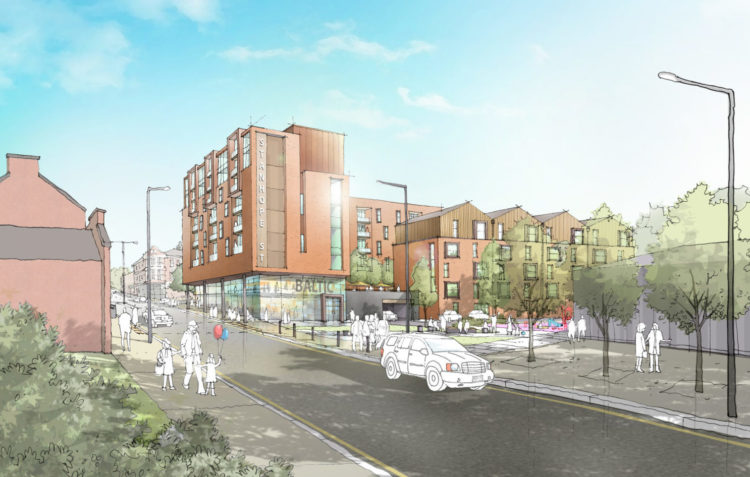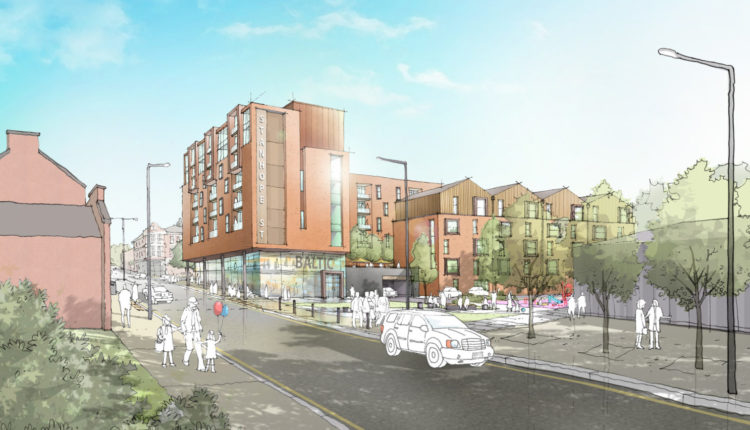Proposal will see 220 apartments and townhouses, 10,000 sq ft of small business space and public park created on two brownfield sites. Tony McDonough reports

Developer Elliot Group is pushing ahead with a £55m residential and commercial development on two brownfield sites south of Liverpool city centre.
Liverpool city council has agreed to sell the large vacant site and neighbouring industrial estate in Dingle to Elliot, which is has already delivered a number of property schemes in Liverpool and is on site on several live projects.
Taking over the location of a stalled scheme around St James church and the well-known Flat Iron site, the firm is proposing to build around 220 apartments and townhouses in two blocks behind the Cains Brewery site on Upper Stanhope Street.
Elliot’s plan also includes 10,000 sq ft of new workspace to satisfy demand from the area’s growing digital industries keen to join to the success story of the nearby Baltic Triangle district.
Proposals for the grassed-over Flat Iron site on the west side of St James Place include a new public park and children’s play area and investment in existing green space along Gore Street.
Submission of a planning application follows four separate consultations with local residents and councillors. If the application is approved it will see two brownfield sites on the southern boundary of the city’s Baltic tech district comprehensively regenerated.
On the east side of St James Place, facing Head Street, a neglected industrial estate will be demolished and replaced with a mix of 130 town houses and apartments. Just 6% of the site’s green space will be lost under the proposals, says developer Elliot Lawless, while the quality of the public realm will be “vastly improved”.
“We’ve had to put our thinking caps on here to deliver a scheme that is right for the neighbourhood,” he said. “The local community and Cllr Steve Munby have been extremely helpful in guiding us towards an appropriate solution and I’m delighted that we can offer such a comprehensive package with green space at the heart of the masterplan.
“In the three consultation events and a walk-around local people were clear about the type and scale of housing they wanted so we’ve reduced the quantity of homes by 25% and upped our investment in open space.”
The developer is seeking permission to refurbish and re-design the existing ‘pocket park’ on Gore Street. The overwhelming majority of the mature trees on the site would be retained and replacements planted for those that would be lost.
Architect Alastair Shepherd of Falconer Chester Hall, who led the public meetings with local residents, says the scheme seeks to address their key concerns in an imaginative way.
He explained: “People told us that fly tipping and anti-social behaviour were a real issue. The green spaces in their current form aren’t safe or an enjoyable place to spend time, so a combination of enhanced management and the benefits of passive surveillance from new residents will help deal with that.
“The community also made practical suggestions to help maintain key views and reduce massing, which we have been able to take on board.”
The site was owned by the Homes and Communities Agency who gifted it to Liverpool City Council on condition that it was returned to housing and commercial use. Two previous council cabinets had approved proposals for the site’s comprehensive regeneration, but they fell through due to funding issues. A planning application for the development is expected to be submitted during December.

